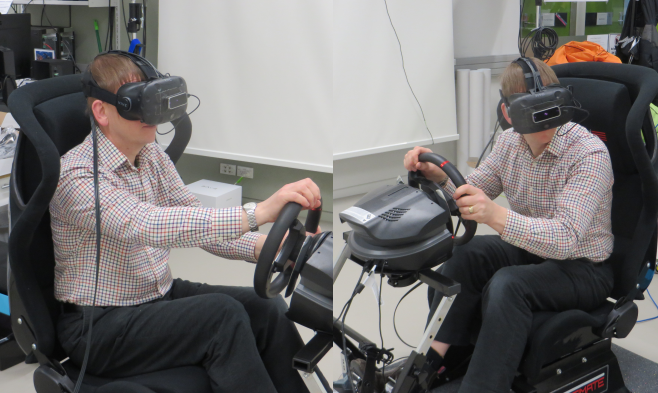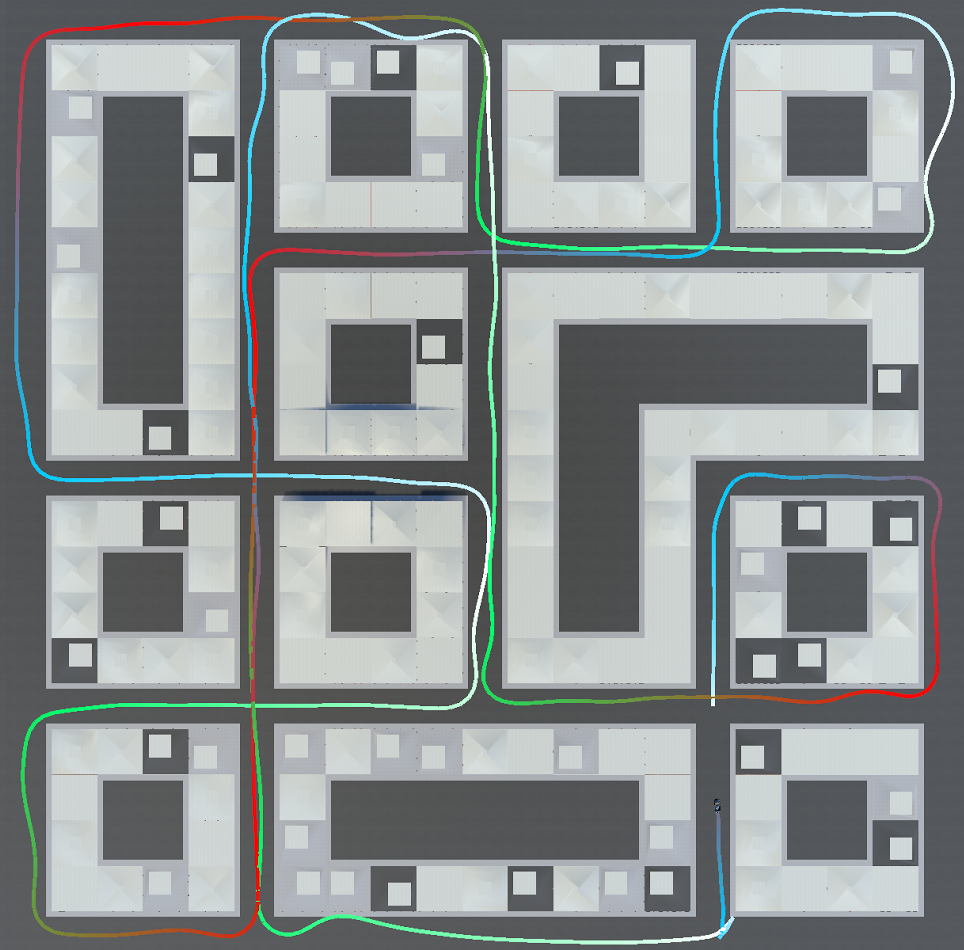VRRoom
A driving simulator to investigate peripheral vision in virtual reality.
I created a driving simulation that allowed users to drive around a city in both VR Headsets (an HTC Vive in this case) or in a Cave Automatic Virtual Environment (CAVE). This was intended to test how a user performs in contexts where their peripheral vision is limited.

Users who partook in the simulation would have to complete a driving related task in the shortest amount of time possible. In this case, they would collect items, akin to a first-person PAC-MAN game. They would complete this task in three different contexts:
- firstly with a single screen in front of them, in order to allow the user to get a feel for the driving simulator,
- secondly (and interchangeably with the third) they would attempt the task inside a VR headset (HTC Vive with 110° field of view)
- and thirdly, using three screens in a CAVE set up (max 270° field of view).
The simulation was made up of several components: A city generator, the driving simulation, and the analytics.
The city generator creates grid based cities based on an input image, which allowed for a wide range of control.
I could create multiple different maps with ease; the primary challenge was creating two different but near-isomorphic maps.
The driving simulation involved setting creating a driveable car that interfaced with the Thrusmater T500S and
interacted with the city (colliding with buildings etc.).
The analytics involved tracking as much data as possible of the user completing the task. This involed tracking time,
position and displacement, item collection times, and when and how long they turned their head in a VR Headset.

Results:
In short, we found no statistically significant results as to if the peripheral vision provided by the CAVE set up improved the user's
performance in this specific task over the Virtual Reality Headset.
However, this project opens up interesting pathways into other studies (e.g. how this performs in more reactionary task) as well as more practical
applications (VR driving tests for locations without access to enough interesting road components (e.g. rural areas)).
If you are interested further interested in this project, a full write up (including technical investigations, study results,
user survey results, and more) can be found here.
Alternately, I'm always happy to discuss my projects and you can contact me via the links below!
This simulation was created in Unity as part of my Software Engineering honours project at Victoria University of Wellington,
under supervision of Professor Neil Dodgson .